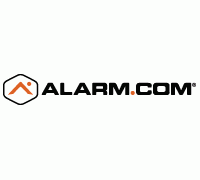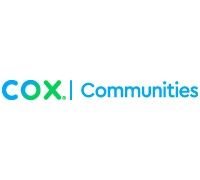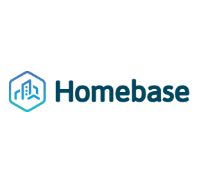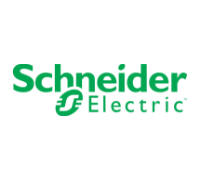Connected solutions are no longer just for hobbyists and technophiles: Insights from Support.com
 Lee Gruenfeld, Vice President, Strategic Initiatives at Support.com, answers the following industry questions prior to the 2016 CONNECTIONS Summit at CES:
Lee Gruenfeld, Vice President, Strategic Initiatives at Support.com, answers the following industry questions prior to the 2016 CONNECTIONS Summit at CES:
What is the most important next step to engage consumers in smart home solutions, connected entertainment services, and/or value-added services like tech support and connected health?
The industry has to aggressively re-position connected solutions as no longer just for hobbyists and technophiles but for mainstream consumers. There are several obstacles to overcome in order to cross this chasm; the most important is that connected devices and systems are perceived by consumers as too hard to implement and use. Not only are consumers returning purchases that are in perfect working order, they are also talking about it online, which hurts the industry overall. We did an online survey of over 1,000 consumers in October, and the data proves this out. Couple this with the fact that consumers often have difficulty seeing the intended value of the devices, and it’s easy to see why home automation is already showing signs of slowdown: Why struggle to make something work when you’re not even sure what the benefit is? Fixing this requires a combination of manufacturers improving the offerings and support organizations working with the manufacturers to ease the customer experience of set up and configuration.
What is the biggest challenge your company faces in 2016?
We are one of the “support organizations” referenced in the previous question. Our software directly addresses the issues that are threatening accelerated adoption of home automation. Not only can we facilitate consumers’ use of technology, we also have the ability to feed back to product designers and managers information that will improve those products by anticipating and averting problems. Our challenge is to help technology providers understand both the threats and the opportunities and the role we can play in helping them navigate those waters.
What is the biggest driver for the connected consumer market?
Three things -- ease of connectivity, plummeting equipment prices and a gigantic, wide-open market -- conspire to motivate vendors to create new devices as quickly as possible. But the “deep” driver that inspires more thoughtful and visionary companies is the availability of massive amounts of detailed data on both the customer support interactions and the performance of the devices themselves. Imagine an insurance company figuring out the highest-risk customers in a flood zone, automatically crafting individual discount offers for leak detectors and automatic shutoff valves, sensing whether there are fresh batteries installed when a hurricane is predicted, and thereby not only pleasing its policy holders but drastically minimizing the number and severity of its losses.
What are the most important initiatives your company is taking in 2016?
-
We want to cement our reputation of being squarely in the forefront of providing software, services and thought leadership for the requisite “connected support” of the Internet of Things.
-
We’ve recently enhanced our core, cloud-based support software to give it unprecedented intelligence and make it available for self-service by consumers, as well as to professional tech support agents, with a seamless communication loop between those two modes.
-
We’re aggressively establishing partnership with key IoT platform and solution providers on our way to becoming the de facto gold standard for IoT support.
Describe your vision for the smart home and entertainment markets in 2020.
-
Emphasis will shift from “fixing things when they break” to “helping consumers get full value from their technology.” To make that happen, the distinction between “support” and “guidance” needs to be blurred. Consumers often feel like failures when they have to ask for help, but if providers make guidance a natural part of getting the most out of their products, they can ensure adoption and retention without the user feeling inadequate.
-
Traditional support (fixing things when they break) will be provided seamlessly, with support solutions embedded in the products themselves, and intelligent enough to diagnosis the problem and provide a solution with minimal effort (and even awareness) on the user’s part.
-
The winning support organizations will be those that solve the finger-pointing problem. It won’t matter whose “fault” the problem is when a device fails to deliver; if the system or something in it isn’t working, a single point of support should be available to resolve it. Cross-vendor cooperation will be required, but it’s in everyone’s best interest to figure out how to get it done in the best and fastest way to make the customer happy again.
-
Data will become the new oil, and will allow us to make proactive support as ubiquitous as reactive support is now. If a homeowner turns his connected light switch on and off four times in eight seconds, the device data should detect that as a problem, trigger a firmware download and restore it to working order, all without the user having to do a thing or even realize that anything happened.
Lee Gruenfeld will be speaking on the panel "Support Solutions: IoT and the Connected Home" alongside F-Secure, Ihiji, Radialpoint, and Sutherland Global Services. Register to attend this session today!
For more information on the speakers and sessions at this year's CONNECTIONS Summit conference, visit www.connectionssummit.com.
Next: Care Innovations: Simple apps that fit into consumer lifestyles drive the biggest growth
Previous: Intel Security's Vision for 2020: Everything Securely Connected




 Lee Gruenfeld, Vice President, Strategic Initiatives at Support.com, answers the following industry questions prior to the
Lee Gruenfeld, Vice President, Strategic Initiatives at Support.com, answers the following industry questions prior to the 










